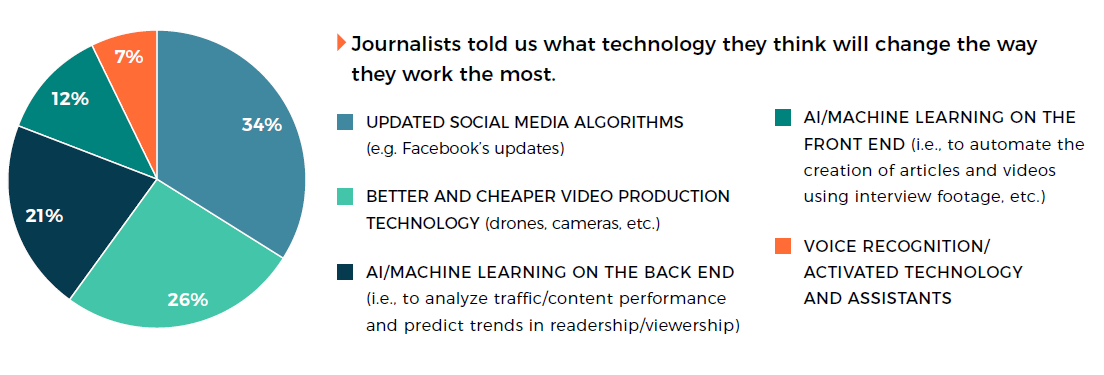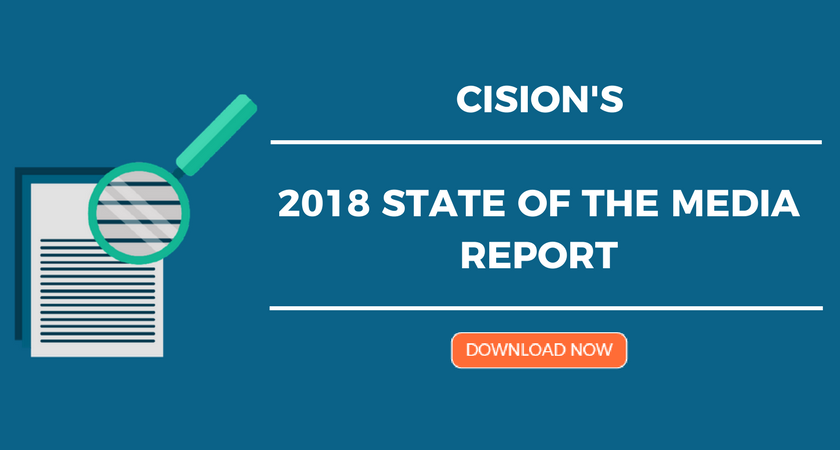People are consuming content in various ways these days. It’s time to give people what they want where they want it.
Anyone who reads news online will know that, in many cases, today’s stories contain a lot more than just the written word. Articles often come with videos, interactive graphics, audio clips, photo galleries and more. In some cases, it seems as if the article is accompanying these other media assets, and there can often be no story, in the traditional sense, at all.
There are many reasons as to why organizations are putting more of a focus on multimedia — audiences spend more time on visual-filled pieces, for instance — but a big one is that media companies want to better personalize their content. They want their customers to be able to see what they want when they want it. In the car? Listen to a podcast on the day’s news. At work? Watch this short video at lunch. Have 15 minutes? Then dig into this detailed interactive.
According to Cision’s 2018 State of the Media Report, social media and reductions in video and multimedia production costs will be major factors driving the future of the media industry. In tandem, these operators are changing the way journalists think about creating stories.
For many media outlets, multimedia is already becoming a must and reporters are expected to get more than just the standard story when they’re on assignment. Yet, in a world where people are consuming all sorts of different media, public relations and communications professionals continue sending out traditional press releases and text emails to the writers, bloggers and influencers they’re trying to reach. That needs to change.
Multimedia is a Must
While the written word will always be important, and many reporters still prefer receiving the typical press release, it is time for the PR industry to deliver brand messages in new ways — even when using those preferred channels. For instance, video is only going to become more important to audiences in the future, while infographics, which can tell a story in seconds, will be crucial for time-strapped readers.
Although creating new types of content is important, it’s not just about presenting something in various ways because it’s the thing to do. Rather, PR professionals need to start keeping the end user in mind — the consumer of content — and thinking about how they can give them the information they want in a more personalized and targeted way.
This will require a shift in thinking. For years, it’s the journalist who has been thought of as the end user. The approach was to give a reporter what they want — mostly text heavy press releases — and hope they use it. Now, with so many other ways to get a story out, communicators need to have a strong understanding of who is reading what and how the blog or media outlet distributes that content. If a blog’s readership prefers video, then consider creating a multimedia press release that includes video. Think about the audience, not only the journalist, first.
Implementing Multimedia into Campaign Strategy
So how would you incorporate multimedia components into a comms strategy traditionally heavy in text? Start out with those elements as supplemental to the core message — include a link to a video or podcast, embed a GIF or even create a striking format in Microsoft Word and add interactive pictures (URL-linked, as shown below) that take the reader to different landing pages.
While multimedia summons visions of webcasts or clickable interactive games, it can be as simple as including iconography of the company vision or a flow-chart showing items in an upcoming release. Visual elements not only help break up blocks of textual information but also provide context for the reader, enabling them to better connect to the material and determine relevancy.
Make Use of Metrics
Of course, producing different kinds of content is easier said than done. It can be expensive and time-consuming to create videos, podcasts or infographics. And until recently there hasn’t been as much of a desire to put money into developing other types of media.
That may be changing as PR professionals can now track the lifecycle of several kinds of earned media content. Integrations with web analytics allow brands to see who clicked on a video on a blog or news site. They can also see if that person then went to a company’s webpage and even if they converted into a sale.
Having that kind of data available can help PR professionals convince executives to put more money behind different earned media campaigns. As well, tapping into the data-tracking toolbox for more metrics, which could include demographic data, media consumption habits, information on the customer journey and more, will give communicators insights into the audience they need to reach. They’ll then be able to deliver better and more personalized content.
The traditional press release is still going strong, but PR and comms do need to start thinking more broadly about content and their consumers. Think harder about who you want to reach, where those people consume content and then give them what they want to see.
To learn more about how to better connect with journalists, and your target audience, download 2018’s Global State of the Media Report.
About Kevin Miller
Kevin Miller is a Product Marketing Manager for Cision. He develops marketing strategy and messaging, focusing on influencer impact and related trends within the comms and media industries.
from Blogs https://ift.tt/2KmawNF





No comments:
Post a Comment